The Right Dabber is Easier to Find Than You Think
There’s a unique pain to trying to maintain a squeaky clean sesh with a dab tool that doesn’t pass muster. Maybe you’ve got the wrong dabber toolhead for the consistency of your concentrates, maybe the handle’s poorly designed or maybe you just want a dabber wand that has a bit more flair to it. A dab tool that doesn’t quite fit can result in a bit of a mess in a best case scenario and scorched fingertips in a worst case scenario. Hey, who needs fingerprints anyway? Simply buying the right style of dabber seems like a simple fix, but you can feel easily overwhelmed when searching through the small army of designs available on the market. Well, we’re here to make things a little easier for you with our comprehensive guide of the best dab tool options.
The Main Factors to Consider When Searching for the Perfect Dabber
The dabbing ritual is, through and through, a very personal experience, so it makes sense that the best dab tool for one person wouldn’t necessarily work as well for the next. However, most everyone can find a little common ground on a few dab tool fundamentals. When considering the best dab tool, every shopper should take the following factors into account:
- Heat Resistance: Since your dabber is going to be subjected to blazing heat consistently, you’ll always want a material with a high heat threshold.
- Durability: Have you ever worked with concentrates that have the consistency of Jujubes or Milk Duds? If so, you need a durable dab tool that can handle some severely sticky resistance.
- Inert Material: This last one’s less obvious, but certain materials will actually create a chemical reaction when they come into contact with your concentrates that can hurt flavor and/or texture. Fortunately, manufacturers of dabbers understand this, so you’d have a difficult time finding a dab tool crafted from material that isn’t inert.
Getting Personal with Dab Tool Selection
Then, there are the considerations you need to take that are more influenced by your personal preferences:
- Viscosity: The viscosity, a measure of the thickness of your concentrates, will factor heavily into the type of toolhead you choose for your dabber.
- Dosage: For those who prioritize precise dosage, a specific size of dab tool can help with comfort, control and accuracy.
- Portability: We’ve never seen a dab wand that wasn’t portable, but some are better suited for travel than others. Some even include a carrying case like the comprehensive Skilletools Master Kit.
Are these all of the variables you need to consider? Probably not, but these are the most common factors to think about when shopping for the perfect dab tool.
The Materials You’ll Most Frequently Find for Dabber Toolheads
As we mentioned, we’ve never found a dab tool that wasn’t made from inert material but maybe there are some bogus bootleg varieties out there somewhere? Yet even within the realm of inert materials, you’ll find choices. In most cases, you’ll find your dabber toolheads designed from one of the following materials:
- Glass: Glass is easily the best material for sculpting and shaping, meaning this will likely be your best choice for a heady dab wand. But you’ll also find dabbers made from glass are less likely to scratch a glass dab rig when compared to the other materials on this list. Glass is also a relatively easy material to clean. However, it’s not nearly as rugged or heat-resistant as the other choices of material on this list with the exception of ceramic.
- Quartz: While not as easy to shape as glass, quartz is far more resistant to heat and damage in general. You won’t find many heady quartz dabber options, though some artists do use intricate etching to give their quartz dab wands character.
- Titanium: Titanium is hands down the most rugged of the materials on this list with titanium dabbers being considered virtually indestructible. You’ll find different grades of titanium but medical grade 2 is the most hygienic choice. Since it’s also a heavier material than the others on this list, you’ll likely want a dab tool that accounts for this with an efficient design contributing to a lighter weight.
- Ceramic: Ceramic dabbers have been largely phased out but you can still find them. You may even have one that’s stood the test of time, though with ceramic being the most brittle material on this list, it’s unlikely. Dab wands honed from ceramic were more popular during the heyday of the ceramic dab nail as a product of people’s aesthetic desire.
- Stainless Steel: Prized for its affordability and hygienic value, stainless steel is often a solid choice for those seeking an affordable dabber that doesn’t skimp on the quality. Want some reinforced strength with a heightened visual aesthetic? Look for anodized stainless steel for a durability that keeps it competitive with titanium. The anodized models (like these gorgeous ones from Captive Elements) also take on an iridescent rainbow appearance that’s visually striking to say the least.
The Most Common Toolhead Types for Dab Wands
Dabber toolheads aren’t quite as cut and dry as the other factors we’ve discussed with most settling somewhere on a design spectrum as opposed into a concrete category. We can set ranges along this spectrum that help to define a toolhead, but many models actually fall as hybrids between two clearly defined tool types. The consistency of your concentrates will most likely determine the toolhead that will work best for you. For the most part, your dabber toolhead will skew close to one of the defined designs below:
- Shovels, Spoons, and Scoops: Offering a cradle of sorts for loose concentrates, shovels, scoops and spoons are the perfect choice for oils and other viscosities that lean more toward liquid than solid.
- Blades and Flatheads: Blades and flatheads make short work of thick slabs of sticky, stubborn concentrates with a cutting motion.
- Hooks, Points and Picks: Hooks, points, and picks are most helpful with sticky concentrates that can be collected around a central focal point.
It may seem like a lot to take in, but when you see the right dab tool, you can almost get a feel for it just by looking at it; especially when you know the right factors to consider. Knowledge is power so get to know your preferences and the rest should fall together easily. And, as always, when in doubt, don’t be afraid to visit the Dab Nation shop or contact us by phone or email with any of your dabber-related questions!


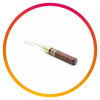

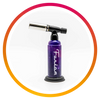
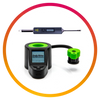
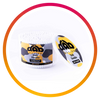


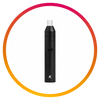

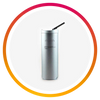
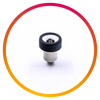
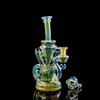
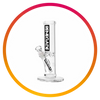

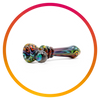
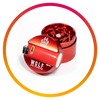
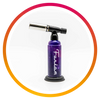
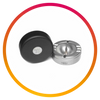
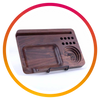
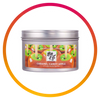




Comments
Leave a comment